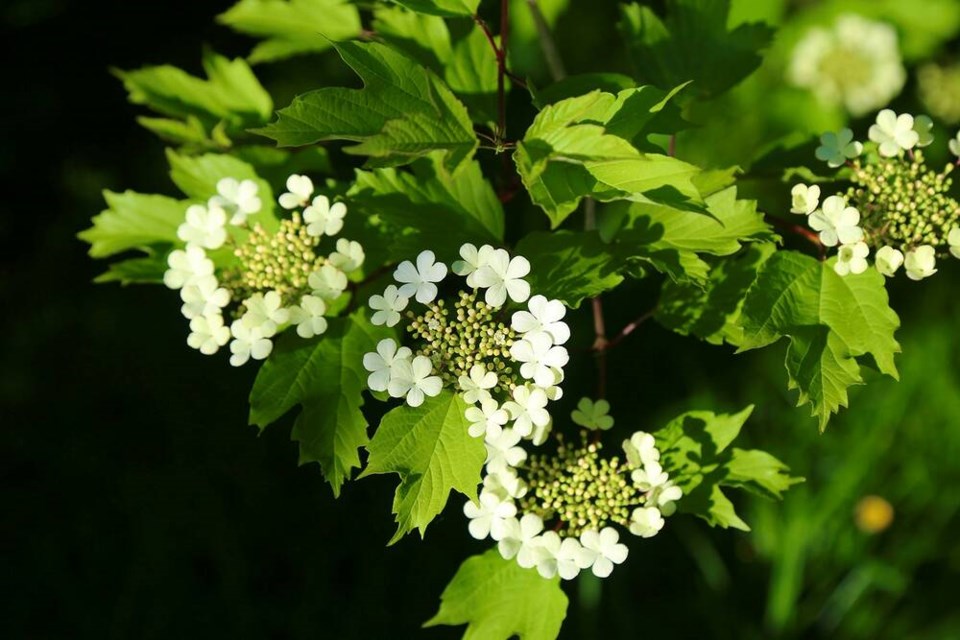About a month ago, I participated in West Vancouver Memorial Library’s spring gardening series of online workshops. I spoke about urban permaculture gardening for a changing climate, and felt as though I barely scratched the surface of a topic so huge and with such far reaching implications to human and planetary health, that I couldn’t possibly do it justice.
This past winter was extraordinarily hard on our gardens. Plant pathologists predict that we may not see the true scope of the implications for many months or even years. Damage that we are seeing now, may in fact have been instigated during the western heat dome of 2021, amid what the federal government refers to as the deadliest weather event in Canadian history.
I opened my presentation with two contrasting slides: one depicting the skeletal remains or extreme damage to common non-native perennials like laurel, boxwood, mock orange, evergreen clematis and lavender; and the other depicting bright and shiny native plants like evergreen huckleberry, haskap, red veined sorrel, coastal strawberry, nodding onion and highbush cranberry.
The lesson to all of us is a simple one. Work with nature and not against her. Expecting that alien species of plants rated below our plant hardiness zone would thrive at the best of times, much less the worst, is magical thinking.
It seems to me that we might adopt a staged phase-out of exotic non-native and nonsensical ornamental plantings that waste natural and unnatural resources. Cedar hedging for example – favoured for its low price point and “instant hedgeness,” yet impossibly fragile left to its own as a manicured monoculture. It is hard to miss the stands of dead and dying cedar hedges populating our urban landscapes.
Not so long ago, when summer wasn’t a three-month drought (more or less) shouldered by gentle and predictable transition seasons, cedar hedging made economic and environmental sense. But now not so much, as water restrictions, drought and extreme heat create an inhospitable environment for these moisture-loving creatures of the temperate rainforest.
It seems that we are at a crossroad, very much as we were in the early 1990s when the organic food movement moved ahead slowly, driven by the mounting pressure of consumers committed to change, and willing to pay for the necessary privilege.
At the time, a dependable supply of local organic produce could be found in home gardens and in exactly one home delivery program. Capers Community Markets and Famous Foods offered organic staples, and it wasn’t easy, convenient or affordable to commit.
Three decades later, conventional and organic produce are priced similarly, though selection remains limited and availability maps discretionary income. So it is today with native plants available to consumers hungry for change.
Local plant centres recognize the willingness of the few, but awareness is low and the economy favours thrift as the $45 native evergreen huckleberry bush sits next to the $19 fledgling cedar, season after season perhaps, because little is known of its utility.
As a landscape designer, I can see the huge chasm between demand and bulk supply of native plants required to swap out the bad for the good. Wholesale nurseries are investing considerably in natives, but we won’t see them in chain retail centres until the economics work, and until consumers are willing to invest in the necessary privilege.
For now, we can educate ourselves about the beauty and climate hardiness of native plants. We can vote with our dollars, and slowly begin converting our landscapes. The Coast Salish (native) Plant Nursery on Dollarton Highway in North Vancouver is a great place to start.
Laura Marie Neubert is a West Vancouver-based urban permaculture designer. Follow her on Instagram @upfrontandbeautiful, learn more about permaculture by visiting her Upfront & Beautiful website or email your questions to her here.
For a taste of permaculture, watch the video below:




